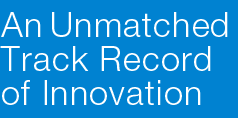|
Product Development With an unmatched track record of innovation and successful product development programs, we are creating an ever-increasing portfolio of solutions that can treat a wide range of heart failure patients. Our most exciting near-term opportunity is the HeartMate II. With the potential to provide support for five years or longer, the device portends a seminal change in the treatment of those suffering from late-stage heart failure. Its approval could greatly expand the market for cardiac assist devices. The Phase I clinical trial results for the HeartMate II, which concluded at the end of 2004, have created a high level of interest among clinicians. In the study, we collected approximately six years of cumulative patient support, and the device performed very well. Patients were typically discharged to their homes and resumed many normal activities. We understand from clinicians that the surgical process appears to be much simpler and faster with this device, with some reporting that they completed the procedure in half the time required for implant of the XVE. We received conditional approval to begin a pivotal Phase II trial for the HeartMate II in February 2005. This study represents a breakthrough for clinical trials involving cardiac assist devices as it includes a number of unique elements. Our HeartMate III, another next-generation rotary pump with a bearingless system, continues to perform well in the laboratory. Based on the results of additional testing during the year, we hope to initiate a clinical program for the device as early as 2006. |
Emerging Therapies Potentially revolutionary advancements in the treatment of heart failure are emerging. They involve exploration of how novel biotherapeutics or pharmalogic agents can be used in combination with current or next-generation cardiac assist devices. As part of our vision to offer a broad range of solutions for the treatment of heart failure, we have taken steps during the past year to position Thoratec in the forefront of these efforts. Among the possible approaches we are exploring are the use of pharmaceuticals, gene therapy and cell therapies, such as skeletal myoblasts and adult stem cells. A hypothesis with growing support is that a patient suffering from heart failure could be supported with a VAD, unloading the heart and allowing these therapies to improve the heart’s function through the regeneration of heart cells. Ultimately, the patient would regain use of his native organ. An important step in this strategy occurred with our equity investment in BioCardia, Inc., a privately-held company that is developing tools to enable the local delivery of biotherapeutics to the heart, including its Helical Infusion Catheter System. The device has performed well in preclinical studies and results from initial human safety studies have been positive. We will continue to explore similar kinds of partnerships with organizations that will provide us access to emerging technologies. While the development of these therapies will be a long-term process, we expect to see significant progress later this decade. |
© 2005 Thoratec Corporation
|
